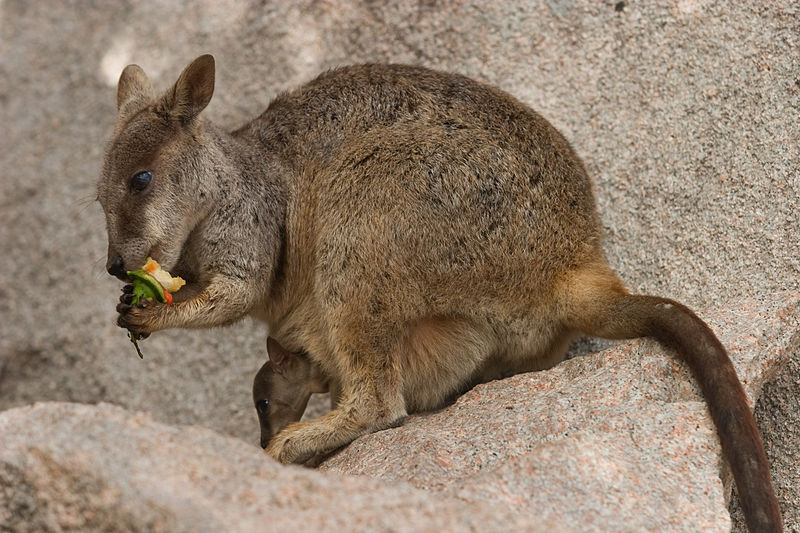
Nabarlek, or Pygmy rock-wallaby, or Little rock-wallaby(Peradorcas concinnа)
Phylum —chordata
Class — mammalia
Order — diprotodontia
Family — macropodidae
Genus – peradorcas
Appearance
The pelage is a grey color, with reddish highlights at the fore-arm, legs and hind parts. The tail is also reddish grey, with a bushy end of coarser hair that begins two thirds along its length, the total length may be from 260 to 335 millimeters. The cheek is marked with a whitish stripe from the eye to the nostrils, a lighter tone that contrasts with the blackish parts of the snout. Another darker stripe is found below the eye and down the neck, the region beneath the fore-arm is also blackish. The head and body length combined in 310 to 365 mm. The measurement of the hind foot is 95 to 105 mm, the ear from base to tip is 41 to 45 mm. The weight range is from 1.2 to 1.6 kilograms.
Habitat
Nabarleks inhabit two separate areas in Australia: northwestern Kimberly in Western Australia and the Northern Territory, including the islands of Borda, Augustus, Hidden and Long.
Behavior
Nabarleks are nocturnal and solitary marsupials. They spend their day sheltering in crevices and caves, emerging at night to eat grasses and herbs. They do not move far from the protection of their rock shelter, though at night may travel far while foraging. Marsupials are rarely vocal, and when used, they are primarily for mating, territorial, and female to offspring interactions. Threat calls are screams in response to attack, sneezes in response to the activity of an opponent, coughs are threats responding to an approach, and barks are hesitant calls generally made over long distances.
Diet
Nabarleks are herbivores. They feed on grasses and sedges. In the dry season they mostly eat a tough fern which is called Nardoo.
Reproduction
Breeding is year round. Females produce one offspring in each litter after gestation of about 30 days. Weaning takes place much sooner than in other species of its genus. The joey is weaned after 160 days outside the pouch and within 175 days is independent. Females are mature by 430 days old and males at 2 years old.
Lifespan of these animals in the wild – 17 years.
Incaptivity
To keep kangaroos, you need to build a spacious warm enclosure witha shelter.
Kangaroo`s food is grass, hay, vegetables (carrots, turnips, boiled potatoes), apples, crackers, grain, a certain amount of feed.
It is important to remember that kangaroos are shy animals.
Kangaroos can live alone, but ideally have a couple – a male and a female, or even a group of 1 male and 2-3 females.
 Russian
Russian
 English
English


















